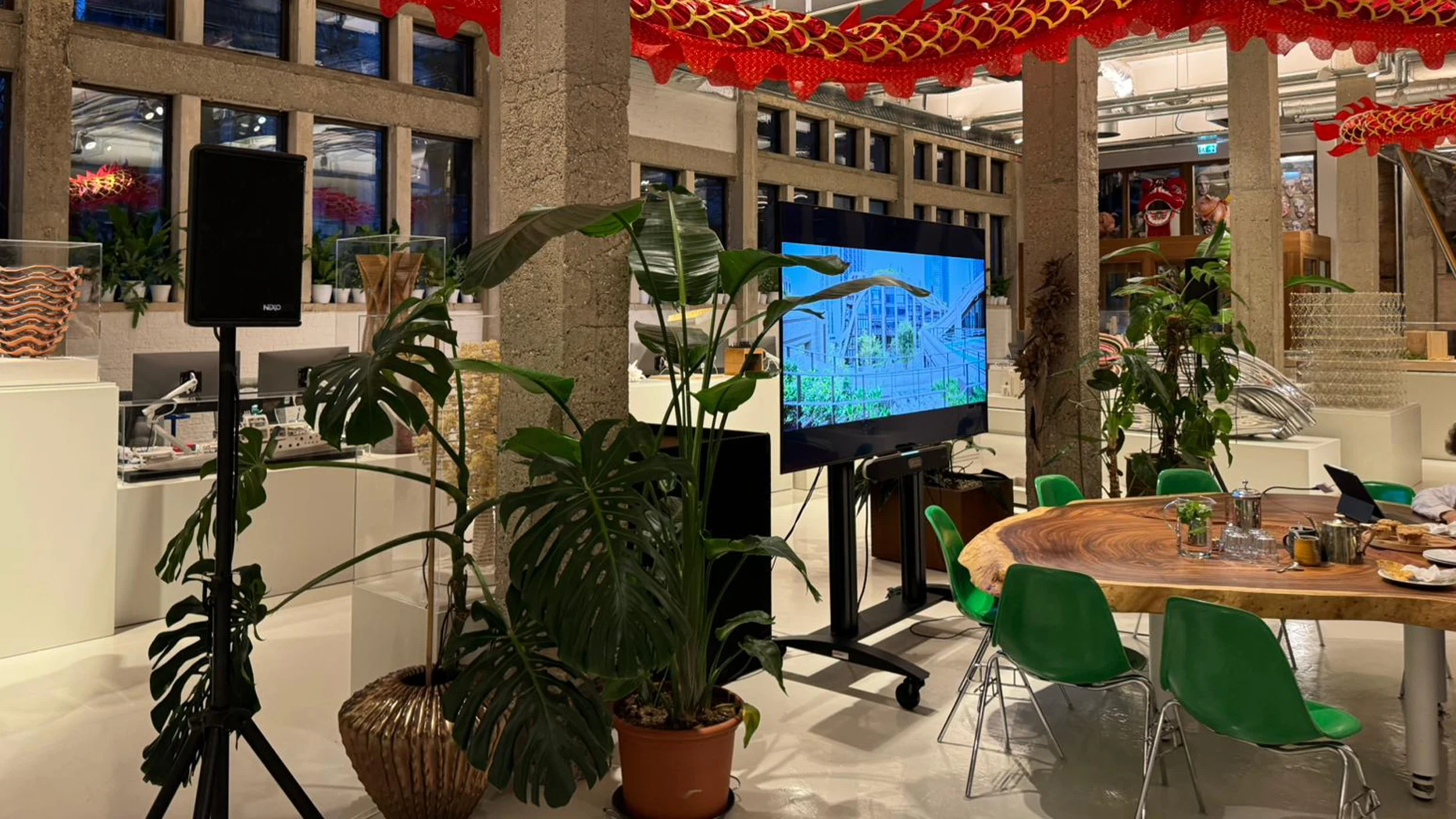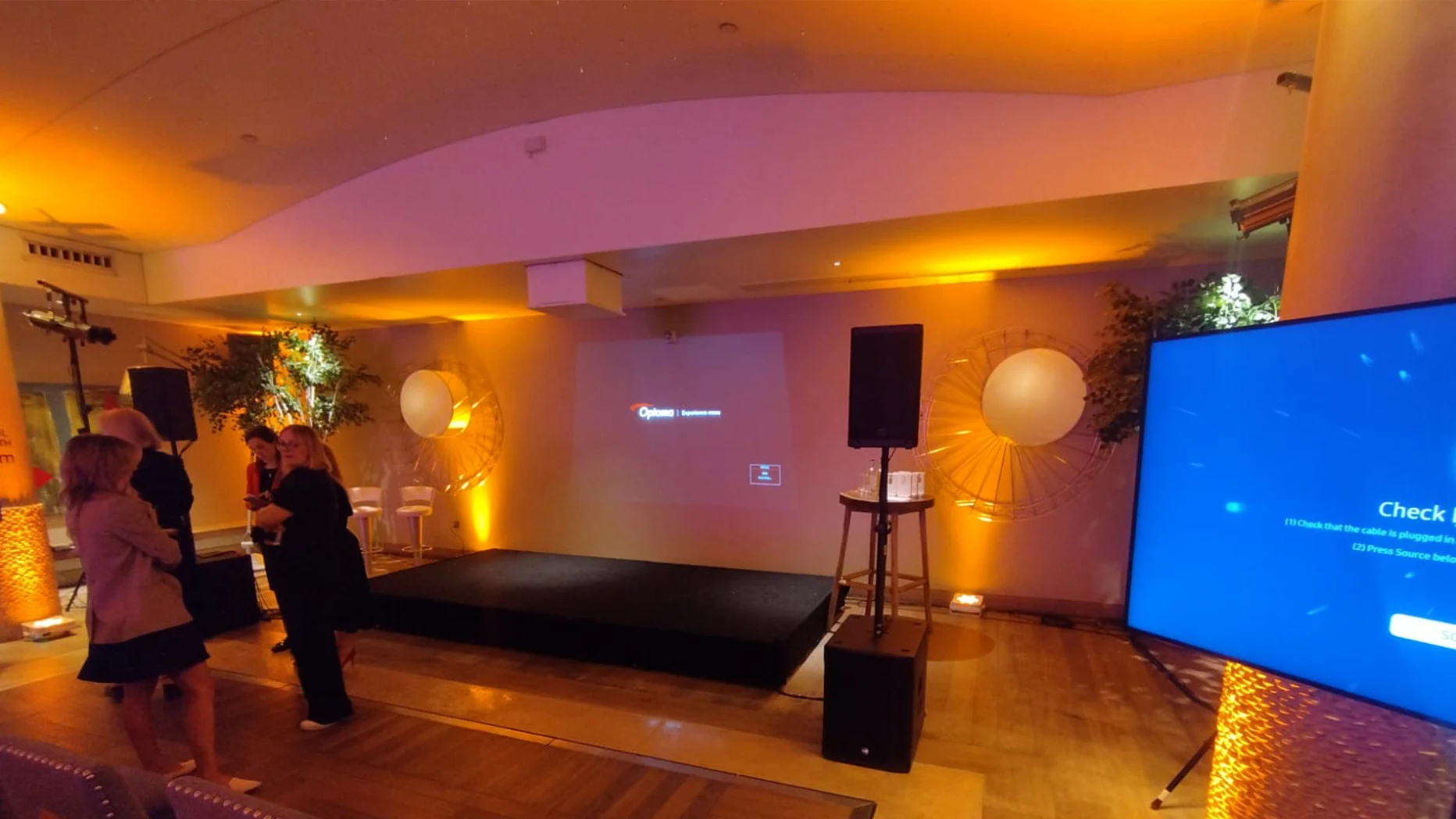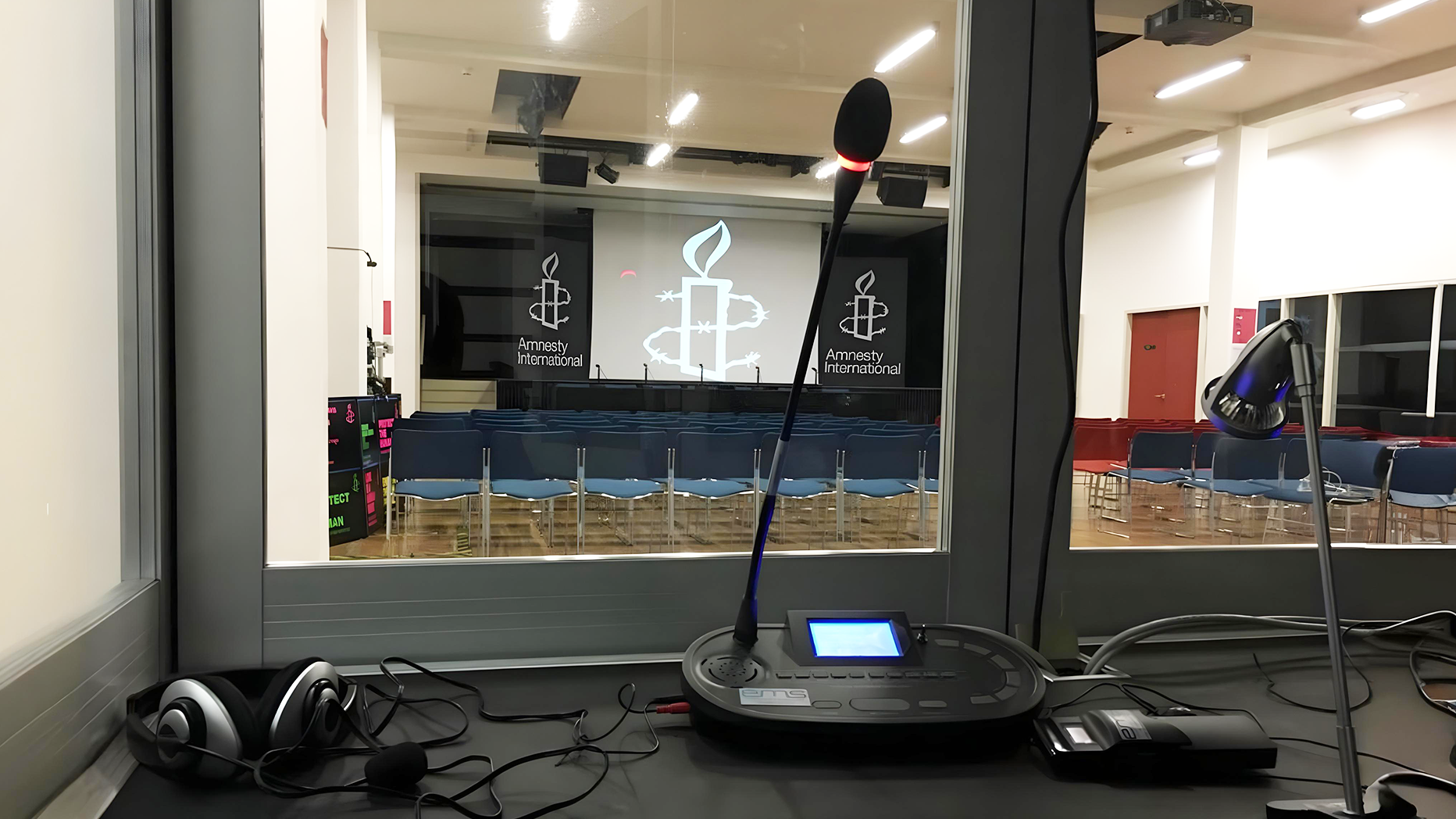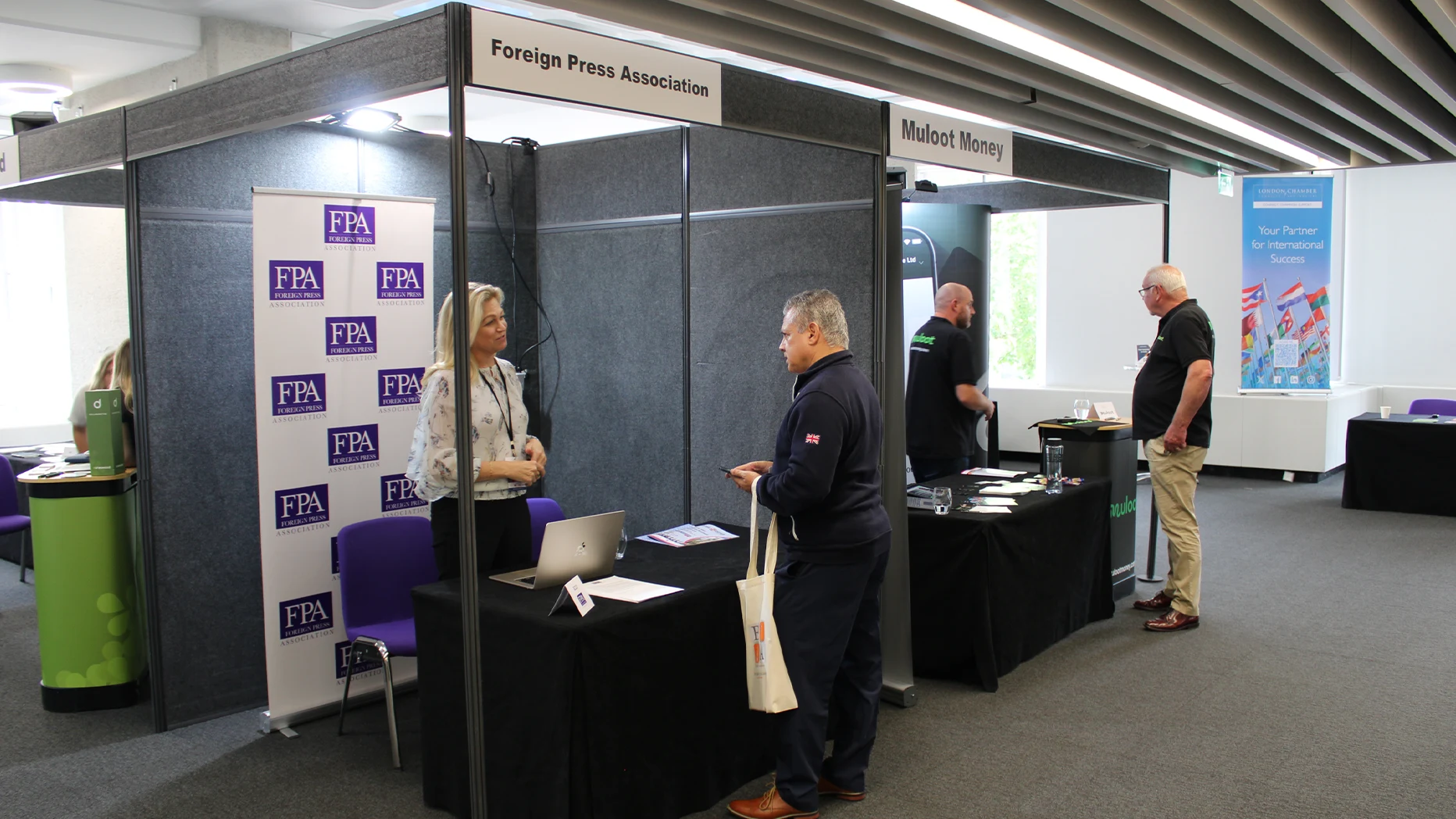Whether you are planning a corporate seminar, trade show, concert, or wedding, LED displays add an undeniable visual punch. But before you rush to book the flashiest screen on the market, there is one thing you really need to understand: pixel pitch and resolution.
These two terms can be confusing at first, but they play a huge role in the quality, clarity, and overall effectiveness of your display. If you are an event planner looking to impress your audience (and your clients), understanding how pixels and resolutions work is crucial.
This will help you choose the right screen for the right settings and avoid costly mistakes. Let’s break it all down in a simple way.
What is pixel pitch in LED walls?
Pixel pitch refers to the distance (in millimetres) between the centres of two adjacent pixels on an LED display. It is usually written like this: P2.5, P3.9, P5, and so on. The smaller the number, the closer the pixels are together, and the higher the image quality, especially at close viewing distances.
Why pixel pitch matters
To understand this concept better, imagine you are watching a big screen up close, and you start to notice little dots or a blurry image. That is probably because the pixel pitch is too wide for how close you are standing. A smaller pixel pitch means:
- Sharper image quality.
- Smoother visuals.
- Better viewing for close-range audiences.
On the other hand, a larger pixel pitch might be perfectly fine and cost-effective if your audience is sitting far away from the screen.
What is LED wall resolution?
Resolution is the number of pixels that make up the screen, just like on your TV or smartphone. It is usually measured in width x height, for example, 1920 x 1080 pixels. But here is a twist: unlike fixed screen devices, LED video walls can be built in various custom sizes, so the resolution depends on two things. Which are:
- Pixel pitch.
- Physical dimensions of the screen.
The smaller the pixel pitch and the larger the screen, the higher the resolution will be. Moreover, the better the visuals of the LED video wall.
Why should event planners care about pixel pitch and resolution?
As an event planner, you are juggling visuals, budgets, space constraints, and audience expectations. If your screen content looks grainy, unreadable, or overkill for the space, it reflects your image. Thus, it is undeniably important and here is how understanding pixel pitch and resolution will help you level up your event setup:
Helps you match the display to the viewing distance
Knowing pixel pitch helps you pick the right screen for the audience’s viewing distance. A general rule of thumb is:
- P1.5 to P2.5 are ideal for short-range viewing, ideally 2–4 metres.
- P3 to P4 is best for medium range viewing (4–7 metres).
- P5 and above are suitable for long-distance viewing (7+ metres).
If guests will be reading text or viewing detailed content up close, like in a product launch or seminar, go for a tighter pixel pitch.
Keeps you within budget without sacrificing quality
Yes, smaller pixel pitch = higher cost. But that does not mean you always need the finest resolution money can buy. By knowing the viewing distance, you can avoid overspending on ultra HD displays. Moreover, try your best to save smart by the following:
- Matching pixel pitch to the venue size.
- Prioritising content clarity, not just screen specs.
- Ask your AV providers for demo visuals before finalising.
Ensures clearer graphics and text
Ever seen a speaker’s slide or sponsor logo appear fuzzy on a giant screen? That is usually due to low resolution for the screen size. When your screen has a high pixel density (small pixel pitch), it supports your:
- Crisp logos and sponsor banners.
- Easy to read fonts.
- Smooth animations and transitions.
And let’s be honest, when the content looks amazing, your event looks polished and professional.
How to choose the right pixel pitch for different events?
If you are still unsure what is right for your event? Here is a quick breakdown based on event types.
Corporate seminars and conferences
The most recommended pitch: P1.5 to P2.5 for the corporate. Why? The audience sits close. Content includes text-heavy slides, charts and video presentations. High resolution is needed for hybrid events with live streaming.
Trade shows and exhibitions
Recommended pitch: P2.5 to P3.9, because visitors often view screens at a medium distance. Product visuals and marketing videos need to pop.
Concerts and large-scale entertainment
Recommended pitches for concerts are P4 to P6 or more. Because audiences are far away. Visuals are more about mood and motion than text detail.
Weddings and private events
Recommended pitch for this is P2 to P3. Because guests are nearby. Screens display videos, names and personalised content. Resolution matters.
Resolution examples based on LED wall size and pixel pitch
| Pixel Pitch | Horizontal Pixels | Vertical Pixels | Total Pixels | Best For |
| P2.5 | 2000 px | 1200 px | 2.4 million | High-end corporate events |
| P3.9 | 1282 px | 769 px | 986,258 | Trade shows, mid-size events |
| P5 | 1000 px | 600 px | 600,000 | Concerts, long-range viewing |
Let us say you are using a 5m x 3m LED screen. Here is how pixel pitch affects the resolution: This chart shows how resolution dramatically increases with a tighter pixel pitch, but so does the cost.
Making smart LED wall decisions
LED video walls are game changers, but only when they are used smartly. As an event planner, you do not need to be a tech expert. But you do need to understand the basics of pixel pitch and resolution so you can communicate your needs clearly and confidently.
Choosing the right LED wall is not just about impressing the crowd. It is about enhancing the event’s visibility and delivering a memorable experience. The next time you are planning an event, do not just go for the biggest screen. Go for the right screen.





